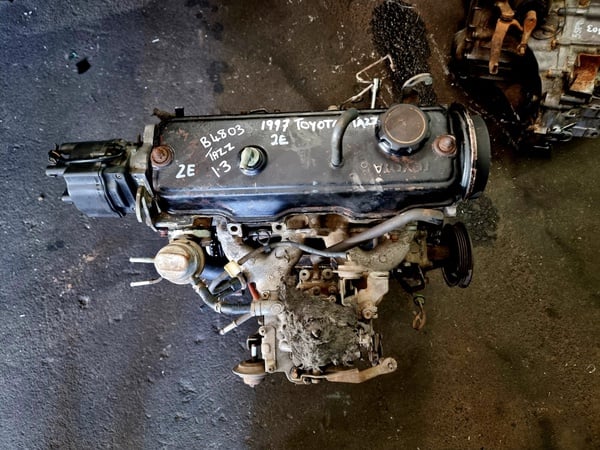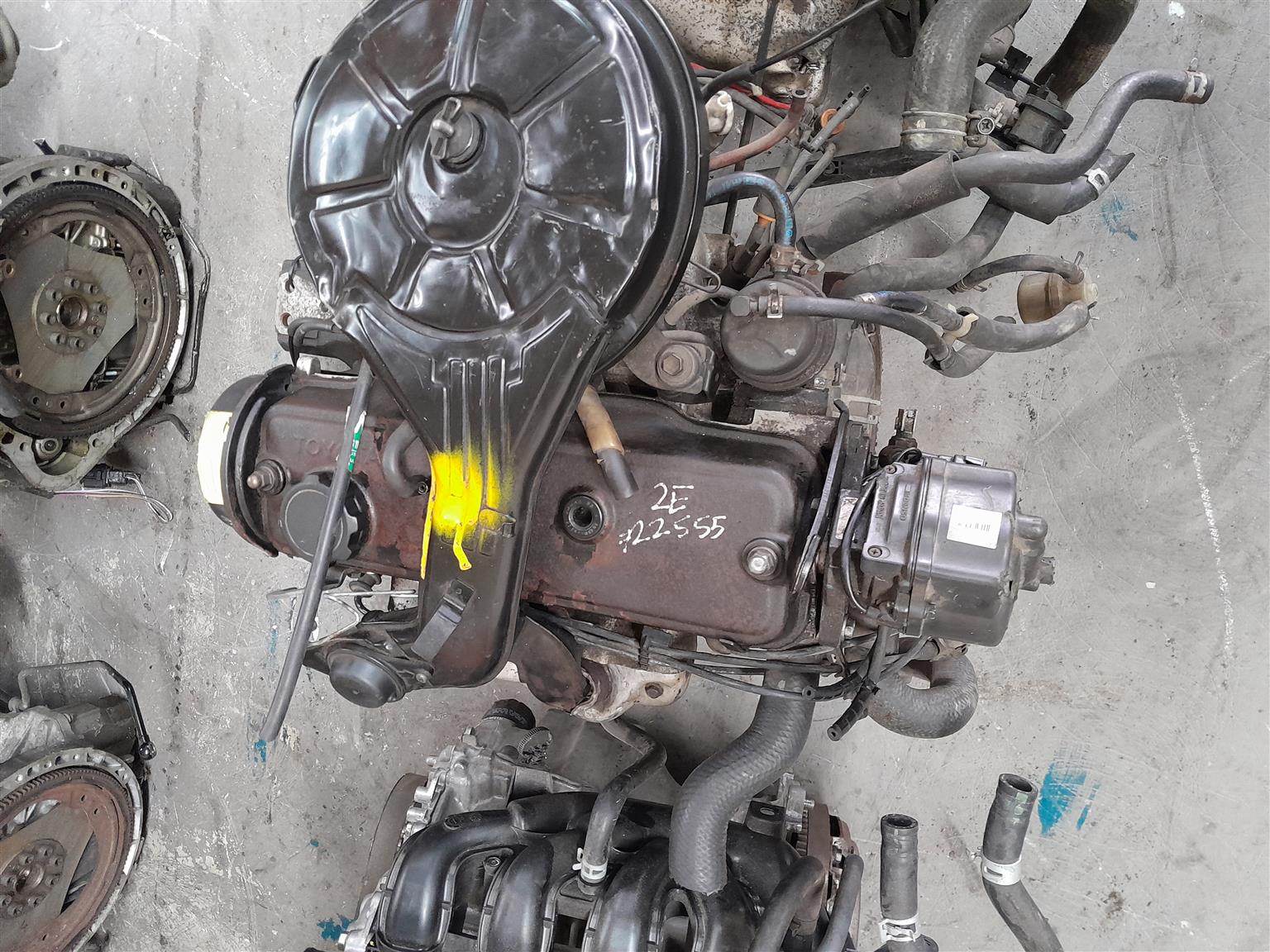Toyota Tazz: An Affordable Car That Doesn’t Compromise on Quality
Toyota Tazz: An Affordable Car That Doesn’t Compromise on Quality
Blog Article
Check Out the most up to date Fads in Engine Modern Technology Through Tazz
In the swiftly developing landscape of auto modern technology, Tazz stands at the center, highlighting considerable improvements in engine systems that prioritize both technology and sustainability. From hybrid engines that enhance gas performance to the appearance of hydrogen gas cells, the fads forming modern-day powertrains are not just improving performance yet also attending to vital ecological difficulties.
Hybrid Engine Innovations
Hybrid engine innovations represent a critical shift in vehicle innovation, integrating the benefits of interior combustion engines with electric propulsion systems. This assimilation not just improves gas performance but likewise decreases emissions, conference progressively strict environmental laws. By making use of both energy resources, hybrid engines can enhance efficiency, providing power when needed while preserving gas throughout much less demanding driving conditions.
Recent advancements in crossbreed innovation include improvements in battery efficiency and regenerative stopping systems. These innovations allow for greater power recuperation during deceleration, which can be redirected to aid in acceleration or power accessory systems. Producers are focusing on small styles and lightweight products to make the most of the performance of crossbreed powertrains.
The growth of plug-in crossbreeds has also broadened the marketplace, allowing motorists to bill their cars using basic electric outlets. This function typically enables for considerable all-electric array, additional decreasing dependence on traditional gas. tazz. As the auto sector continues to evolve, hybrid engine technologies are expected to play a vital function in linking the space between standard lorries and fully electrical versions, offering a transitional solution that deals with diverse customer demands and choices
Advancements in Electric Powertrains
The automobile landscape is swiftly developing, with electrical powertrains becoming a leading force in sustainable transport. Developments in electrical automobile (EV) modern technology are significantly boosting performance, individual, and effectiveness experience. Key developments consist of renovations in battery chemistry, which have actually boosted power thickness, decreased charging times, and expanded total battery life.
Solid-state batteries, for instance, guarantee to transform the market by supplying better security and efficiency compared to typical lithium-ion cells. Innovations in regenerative braking systems are enabling vehicles to recuperate power throughout deceleration, adding to overall performance.
Along with battery technology, electrical motor designs are becoming more innovative. Developments such as incorporated electric motors and progressed thermal management systems are aiding to optimize power distribution and minimize weight, eventually improving car characteristics.

Jointly, these advancements underscore the commitment to transition in the direction of cleaner, more reliable transport remedies, placing electric powertrains at the center of automotive development.
The Increase of Hydrogen Gas Cells
Increasingly, hydrogen gas cells are obtaining grip as a viable alternative to typical internal combustion engines and battery electrical cars. This modern technology harnesses the chemical energy saved in hydrogen, converting it into electrical power with an electrochemical reaction with oxygen. The main by-product of this procedure is water, making hydrogen gas cells an eco-friendly alternative with no emissions at the tailpipe.

Automakers are progressively purchasing hydrogen gas cell technology, recognizing its potential for long-range applications and rapid refueling abilities that equal standard fuels. Furthermore, fields such as durable transport and public transportation are specifically appropriate for hydrogen fuel cells, where battery electrical solutions might drop short due to weight and array constraints.
As study and financial investment proceed to increase, hydrogen gas cells are poised to play a significant role in the future landscape of clean Visit Website transportation and power remedies.
Enhancements in Internal Burning Engines
Technologies in interior burning engine (ICE) modern technology are changing standard automobiles to meet modern ecological requirements and performance expectations. Direct fuel injection, for instance, permits for better atomization of gas, leading to even more full burning and enhanced power result.
Additionally, turbocharging has actually acquired prestige, permitting smaller sized engines to supply greater performance without the weight of bigger engines - tazz. This technology not only boosts effectiveness but also adds to lower gas consumption. Variable shutoff timing systems are likewise being refined, allowing engines to adjust to numerous driving problems for enhanced torque and responsiveness
Moreover, making use of light-weight products in engine building is ending up being basic, more improving fuel efficiency by minimizing general automobile weight. Engine control units (ECUs) are progressively sophisticated, making it possible for real-time adjustments that optimize performance and emissions.
These enhancements jointly signify a critical shift in ICE technology, aligning with global sustainability goals while still providing the efficiency drivers expect from their cars. As the sector advances, these enhancements proceed to form the future of traditional vehicle design.
Future Fads in Engine Effectiveness
Considerable advancements in engine performance are expected as producers focus on incorporating innovative innovations to meet rigorous ecological laws and customer demands. The shift in the direction of electrification, hybrid systems, and alternative gas is reshaping the automotive landscape, driving innovations that boost gas economic climate and reduce emissions.
Among the crucial fads is the application of sophisticated products and manufacturing strategies. Lightweight compounds and high-strength alloys add click for info to minimized car weight, therefore boosting overall efficiency. Additionally, the adoption of turbocharging and variable shutoff timing modern technologies permits boosted power result from smaller sized engines, even more improving gas economic climate.

Conclusion
Innovations in crossbreed engine systems, electric powertrains, and hydrogen gas cells demonstrate a dedication to decreasing exhausts while enhancing performance. Improvements in inner burning engines and an emphasis on lightweight materials contribute to total engine performance.
From crossbreed engines that optimize fuel effectiveness to the appearance of hydrogen fuel cells, the patterns shaping contemporary powertrains are not just enhancing performance however additionally addressing important environmental challenges.Crossbreed engine developments stand for a pivotal shift in automobile modern technology, integrating the benefits of internal combustion engines with electrical propulsion systems.Furthermore, turbocharging has actually obtained importance, allowing smaller engines to provide higher performance without the weight of bigger engines. Additionally, the adoption of turbocharging and variable valve timing modern technologies allows for improved power output from smaller sized engines, even more boosting gas economic situation.
Improvements in interior burning engines and an emphasis on light-weight materials contribute to overall engine performance.
Report this page